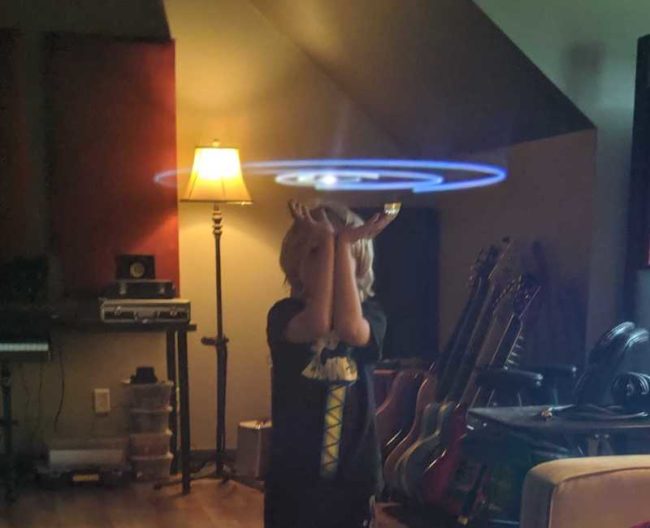Augmenting Our Universe on Magic Leap
Video: Bouncing planets off of walls around a molten Earth.
Back in April, we announced that we received a grant to develop Universe Sandbox for Magic Leap, the augmented-reality (AR) technology that “lets you see and interact with digital content in the world around you.”
This is possible through mapping walls and objects and then superimposing images, making it seem like objects are right there in front of you. This also allows interactions between the real and digital worlds, so for example with Universe Sandbox, this means you could explore the Solar System in your living room and smash planets against your walls.
Leaps and bounds
Video: Increasing Earth’s radius until it’s as big as the room.
At that time of our last Magic Leap post, we had just gone through the Magic Leap bootcamp and had barely started on development. It didn’t take long to get to the point where it was possible to launch Universe Sandbox on the Magic Leap headset and see Earth rendered in the space around you. But this was about the extent of what was possible in the first couple of weeks.
Fast forward a few months and Universe Sandbox is now a whole new experience in Magic Leap. We’ve done a lot of work bringing the entire desktop user interface (UI) to AR. This means you’ll have the same amount of power and control you have on desktop when it comes to creating, interacting, and editing.
That’s right, all of the editable properties, all of the tools and settings and switches, they’re all available in AR. Except instead of appearing on your monitor, they appear right in the room in front of you.

Image: Our developer’s son holding up the Solar System, making Atlas’ job look easy.
We’ve also made considerable progress on getting performance to a manageable level. AR and VR are both pretty demanding when it comes to performance, as they’re dealing with more complex input and motion tracking. And for standalone hardware like the Magic Leap (and standalone VR headsets like the Oculus Quest), the hardware is necessarily more limited than what can be found in large gaming PC towers. One particular challenge for us right now is getting the interface discussed above — with its long lists of properties and settings — as fast as it should be. No one wants to wait for panels and controls to load. There’s definitely still more work to do (and in general, there will always be room for optimization with Universe Sandbox across all platforms), but we’ve gotten the experience running much more smoothly now.
Bouncing planets
Video: Launching planets toward surfaces detected by Magic Leap.
Ever play a game of racquetball where instead of a normal rubber ball you used a planet? Neither have we. But we’ve gotten pretty close to that!
It turns out that not only is it fun to smash planets against your wall, it’s also fun to let them bounce off the walls and around the room instead. This is pretty easy to do with Magic Leap, as it creates a map of your room which we then interpret as solid surfaces that are used for any type of collision.
In the video above, you can see the mesh that Magic Leap created for the walls, floors, and some objects as well.
Coming soon to VR…
In our original Magic Leap post, we also talked about how development for Magic Leap is going to improve Universe Sandbox on every other platform as well, from desktop to mobile to console*. This is especially true for VR. If you’ve played Universe Sandbox in VR, then you know the interface is fairly limited when compared to the desktop version.
This limitation will soon be a thing of the past once we make the changes to the interface we discussed above, which will bring over the whole desktop functionality. This has been a long-time coming for VR, and we’re excited to see how it’ll open up the experience. Of course, we still have some VR- and AR-specific tools and way of interacting in mind for the future that will take advantage of their unique capabilities.
Aside from this cross-platform interface, we should start to see some other changes ripple from Magic Leap development. The performance optimizations needed for AR should help with the mobile Android version, which in turn helps with a potential Oculus Quest version*. Ah, the circle of life!
We look forward to continuing Universe Sandbox development on Magic Leap through this year and seeing all our hard work pay off, not just for this unique AR experience, but for every platform in our future.
* Universe Sandbox is currently available on Windows, Mac, Linux, with support for Vive, Rift, and WMR. We are working on a mobile version (iOS and Android) as well as this Magic Leap version, and we are considering console development for the future. We’re not working on a Quest version yet, but that’s likely in our future as well. Want to receive updates about these new versions? Sign up for our newsletter!
